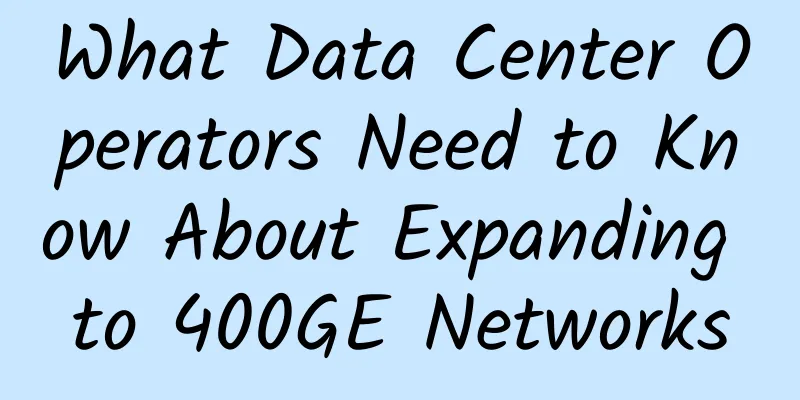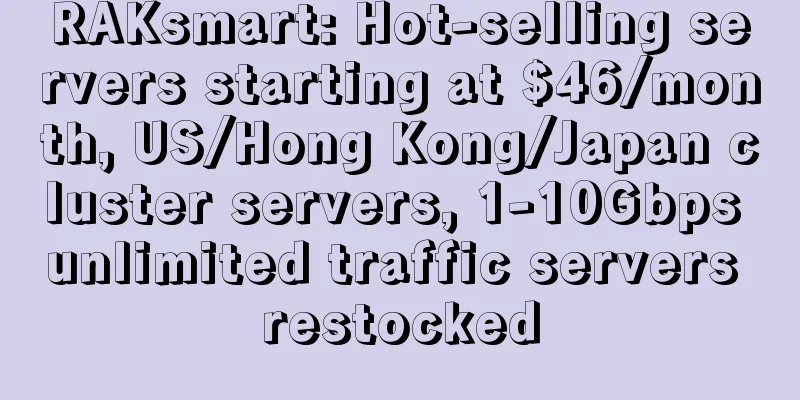How to get out of the maze of mixed network management

|
When people are walking on a broad road, the road is quite easy to walk along. But what if there are too many forks in the road? It is easy to get lost. This is just like the current enterprise network in the process of digital transformation, constantly trying to introduce new technologies such as SD-WAN, network function virtualization or edge computing, turning the original simple network into a complex hybrid network that integrates physical, virtualized and cloud infrastructure. So how to manage the hybrid network? The following key points must be understood. In current enterprise networks, wired and wireless networks are indispensable. However, some enterprises require multi-platform, multi-vendor, and multi-cloud network environments, each of which has different management and control complexities. This often leads to lagging network management, which inevitably leads to some performance problems and even becomes the fuse of downtime, causing tens of thousands or even millions of economic losses to enterprises. In order to strengthen network management, one of the main challenges that many network operations teams have to face is the increasing number of monitoring and management tools used. In hybrid networks, the problem of too much fragmentation of management tools is actually more serious than many people realize. According to the Enterprise Management Associates' biennial network management survey, almost half of network professionals use 4 to 10 tools to monitor and troubleshoot network problems. Nearly one-third of IT teams have to use 11 or more tools. Realize cross-network data source control When the operations team performs network capacity planning, solves key performance issues, or analyzes abnormal alarms, in order to achieve end-to-end visibility of the entire network, they need to have a deep understanding of various data sources. From flow (ipfix, netflow, sflow, cflowd, etc.) tools and snmp functions to packets (capture and analysis) and API integration (rest, bulk, stream, etc.), each data source plays a unique and critical role in the entire network management process. If these different data sources cannot be used, the operations team may not be able to manage and troubleshoot network failures due to insufficient data. However, in the face of mixed networks, different professional network management solutions are not friendly in terms of interoperability. The fragmented management situation hinders data sharing, reduces the efficiency of the operation and maintenance team in detecting network problems, and often prolongs network service interruptions and a longer average recovery time. Naturally, the user experience becomes worse. Network-wide visualization is essential Of course, simply having access to every network data type is not enough. Network managers need solutions that transform data into simple management and troubleshooting workflows. For example, flow data from virtual, physical, and cloud devices is particularly important for managing and troubleshooting application performance. However, it is difficult to achieve a good user experience if the network management platform does not allow network managers to visualize application flows across the entire network (from source IP address to destination IP address). Packet-level network monitoring is critical to solving complex application problems such as slow database performance. Visualizing network paths and viewing packet data creates performance visualizations that enable network administrators to solve problems faster. Whether solving VoIP problems or optimizing new SD-WAN deployments, providing sophisticated visualization of all types of network data will be key to comprehensive network management and control. Conclusion The complexity challenges brought by multi-vendor, multi-platform and multi-cloud IT environments, coupled with the current problem of fragmented tools, have made management a difficult task for today's hybrid networks. At the beginning of the era of the Internet of Everything, this complexity will increase exponentially. At that time, if the enterprise operation and maintenance team wants to predict, identify, troubleshoot and solve various network problems, it must continue to optimize in advance in the path of simplifying management tools, connecting data sources and visualizing the entire network. |
<<: In addition to the ping command, these network commands are also very useful
Recommend
HostXen charges 100 yuan and gets 20 yuan, new users get 50 yuan for registration, US/Japan/Singapore/Hong Kong VPS 6GB memory starts from 70 yuan/month
HostXen is continuing its year-end promotion this...
Programmers need to understand CDN, this article should be enough
I recently learned about edge computing and found...
If only the Canvas tag is left
[[420999]] 1. Background If only the canvas tag i...
Tsinghua Unigroup's H3C wins China Mobile's 2020-2022 IPS centralized procurement project with the largest share
Recently, China Mobile announced the bidding resu...
Protecting the present and the future! Cisco helps enterprises resume work and production and ensure business continuity
[51CTO.com original article] The sudden outbreak ...
In addition to "new infrastructure", what else can operators do for "stability and security"
Solidly carrying out the "six stability"...
With the rise of new infrastructure and other demands, the upgrade of the next generation domain name system is imminent
When it comes to the Internet domain name service...
China Unicom successfully returns to the forefront of 5G user development
[[389476]] After much anticipation, China Unicom ...
How did the No. 1 brand of domestic load balancing products become successful? Here’s the answer from Deepin Technology!
According to IDC data in the first quarter of 201...
Maxthon Hosting: Hong Kong CN2 line 2G memory VPS 20% off 56 yuan/month, optional native IP, optional high defense, support IP change
Maxthon Host is a long-established foreign hostin...
5G development is hindered, People's Daily speaks out helplessly, the three major operators should reflect on it
The 5G era means more advanced technology and fas...
Dual stack coexistence guarantees application Chifeng City accelerates the construction and application of IPv6 in e-government external network
[[435282]] Chifeng City's e-government extran...
HostTheBest: $2.5/month KVM-quad-core/1GB/30G SSD/1Gbps unlimited traffic/Los Angeles data center
HostTheBest's website about page introduces t...
Once together, now separated, 5G baseband will connect everything
2019 is the first year of 5G, but SoC and 5G base...
10gbiz VPS 60% off, Hong Kong CN2 GIA line from $2.75/month, Los Angeles CN2 line from $2.99/month
10gbiz is a foreign hosting service provider foun...







![[Python Flask Practice] Get HTTP request data](/upload/images/67eb92666d44e.webp)

![[2024] Inventory of high-defense VPS merchants, US high-defense VPS/Hong Kong high-defense VPS](/upload/images/67cabc6e34c3c.webp)